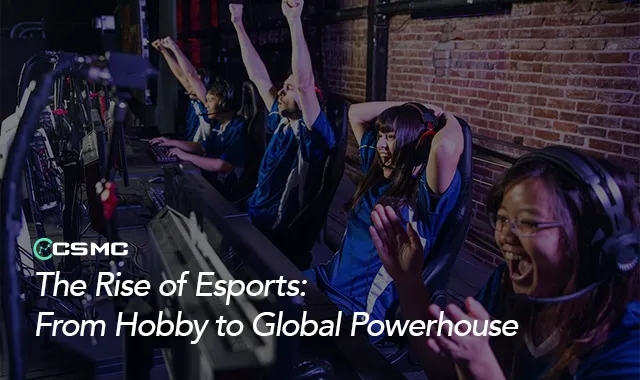Esports, or competitive video gaming, has undergone a dramatic transformation over the past few decades. What began as a niche hobby has now blossomed into a global industry, drawing millions of fans and generating billions in revenue. The journey of esports from small-scale competitions to packed arenas and international recognition is a testament to the power of technology, community, and entertainment.
The Early Days: The Birth of Competitive Gaming

The roots of esports can be traced back to the 1970s and 1980s, a time when gaming was primarily seen as a pastime rather than a competitive sport. The first recorded video game competition took place in 1972 at Stanford University, where students competed in the game “Spacewar!” The prize? A year’s subscription to “Rolling Stone” magazine.
The 1980s saw the rise of arcade games like “Pac-Man” and “Space Invaders,” which further fueled competitive gaming. However, it wasn’t until 1980 that the first large-scale video game competition was held: the “Space Invaders Championship,” organized by Atari. This event attracted over 10,000 participants, marking a significant moment in the history of esports.
The 1990s: The Rise of Online Gaming

The 1990s were a pivotal decade for esports, thanks in large part to the advent of the internet and the rise of PC gaming. Games like “Doom,” “Quake,” and “StarCraft” allowed players to compete against each other online, breaking down geographical barriers and expanding the competitive gaming community.
The late 1990s also saw the establishment of the first professional esports leagues and tournaments. The Cyberathlete Professional League (CPL), founded in 1997, was one of the first organizations to host professional gaming tournaments with significant cash prizes. Around the same time, South Korea began to emerge as a powerhouse in esports, with games like “StarCraft” becoming national phenomena.
The 2000s: Esports Goes Mainstream
The new millennium brought with it an explosion in the popularity of esports. The launch of platforms like Twitch in 2011 allowed fans to watch live streams of their favorite players and tournaments, bringing esports to a global audience. Major titles like “League of Legends,” “Counter-Strike,” and “Dota 2” became the cornerstone of competitive gaming, drawing millions of viewers to online streams and live events.
Esports organizations began to form, and players started to gain celebrity status. Tournaments like The International (for “Dota 2”) and the League of Legends World Championship offered multi-million-dollar prize pools, further legitimizing esports as a professional career path.
The 2010s: The Era of Professionalism and Global Growth
The 2010s saw esports become a multi-billion-dollar industry. Professional teams, sponsorships, and media coverage all contributed to its growth. Esports events began to be held in large arenas, with tens of thousands of fans attending in person and millions more watching online.
The industry’s growth also caught the attention of traditional sports organizations and media companies. Major sports teams started investing in esports, and networks like ESPN began broadcasting esports events. In 2018, the Overwatch League became the first city-based esports league, similar to traditional sports leagues like the NFL or NBA.
The Present and Future of Esports

Today, esports is a global phenomenon with a diverse and passionate fanbase. The industry is projected to generate over $1 billion in revenue in 2024, with further growth expected in the coming years. Esports has also gained recognition from mainstream institutions; for example, it was included as a demonstration sport in the 2018 Asian Games and is being considered for inclusion in future Olympic Games.
Looking ahead, the future of esports is bright. Advancements in technology, including virtual reality (VR) and augmented reality (AR), are expected to create new and immersive ways for players and fans to engage with games. Additionally, as more educational institutions recognize esports as a legitimate career path, we can expect to see more structured training programs and scholarships for aspiring players.




